I have a string that represents a non indented XML that I would like to pretty-print. For example:
<root><node/></root>
should become:
<root>
<node/>
</root>
Syntax highlighting is not a requirement. To tackle the problem I first transform the XML to add carriage returns and white spaces and then use a pre tag to output the XML. To add new lines and white spaces I wrote the following function:
function formatXml(xml) {
var formatted = '';
var reg = /(>)(<)(\/*)/g;
xml = xml.replace(reg, '$1\r\n$2$3');
var pad = 0;
jQuery.each(xml.split('\r\n'), function(index, node) {
var indent = 0;
if (node.match( /.+<\/\w[^>]*>$/ )) {
indent = 0;
} else if (node.match( /^<\/\w/ )) {
if (pad != 0) {
pad -= 1;
}
} else if (node.match( /^<\w[^>]*[^\/]>.*$/ )) {
indent = 1;
} else {
indent = 0;
}
var padding = '';
for (var i = 0; i < pad; i++) {
padding += ' ';
}
formatted += padding + node + '\r\n';
pad += indent;
});
return formatted;
}
I then call the function like this:
jQuery('pre.formatted-xml').text(formatXml('<root><node1/></root>'));
This works perfectly fine for me but while I was writing the previous function I thought that there must be a better way. So my question is do you know of any better way given an XML string to pretty-print it in an html page? Any javascript frameworks and/or plugins that could do the job are welcome. My only requirement is this to be done on the client side.
